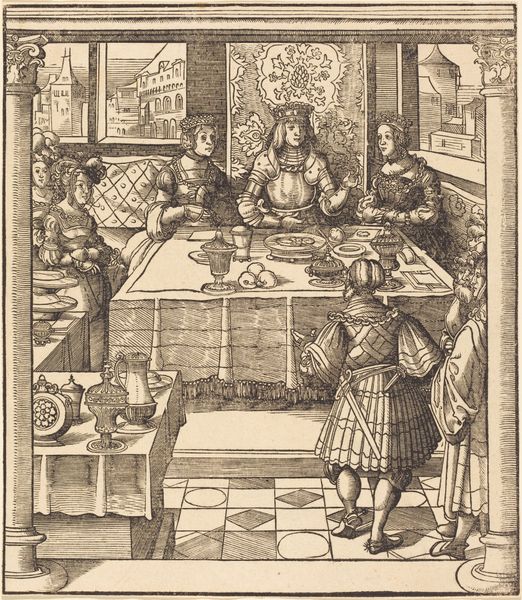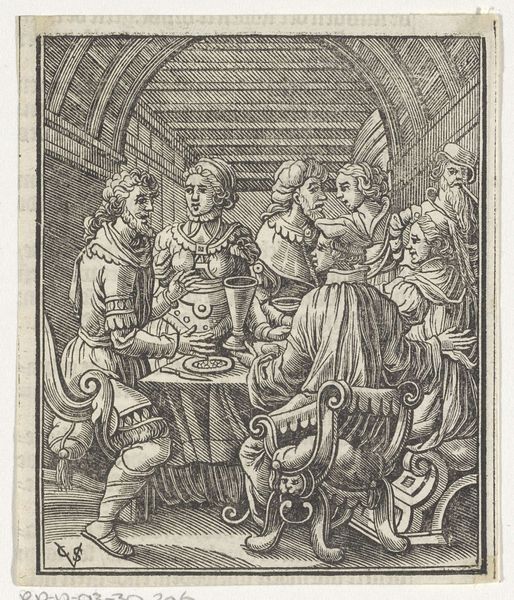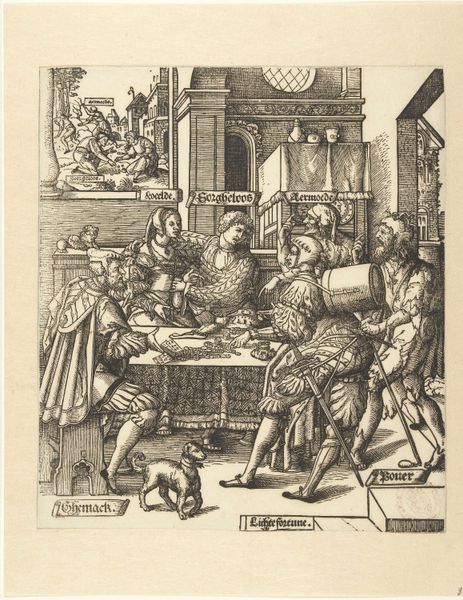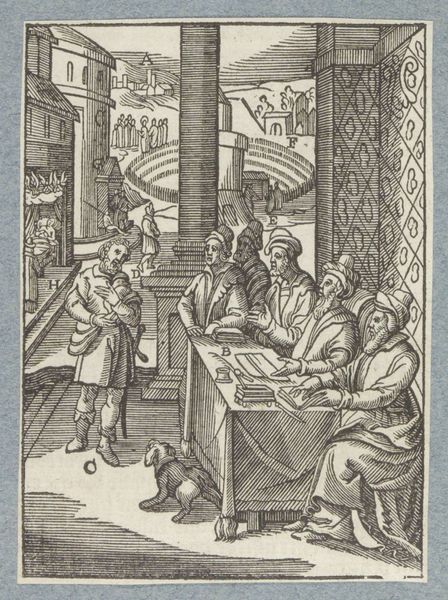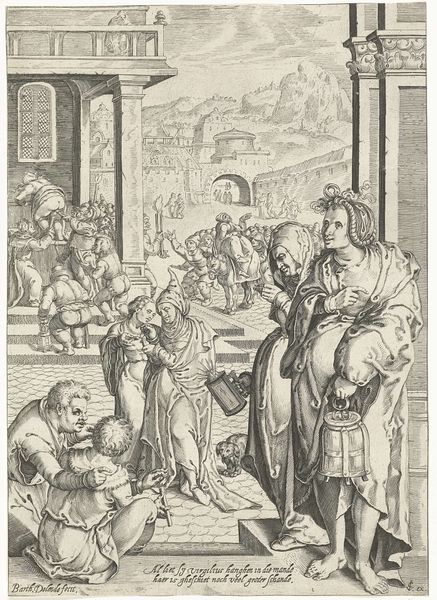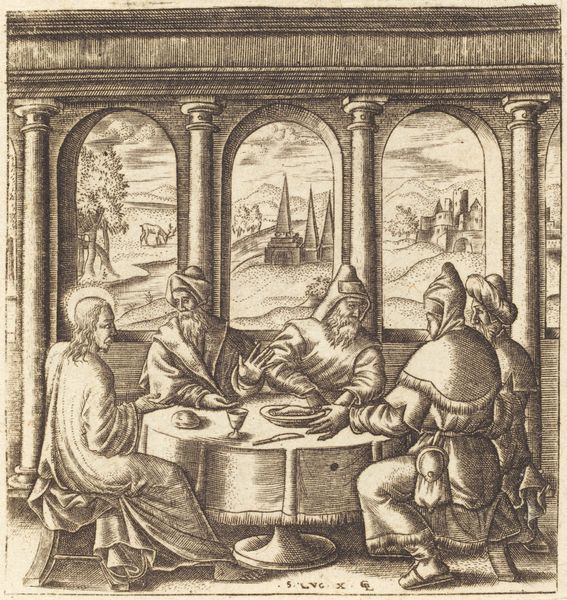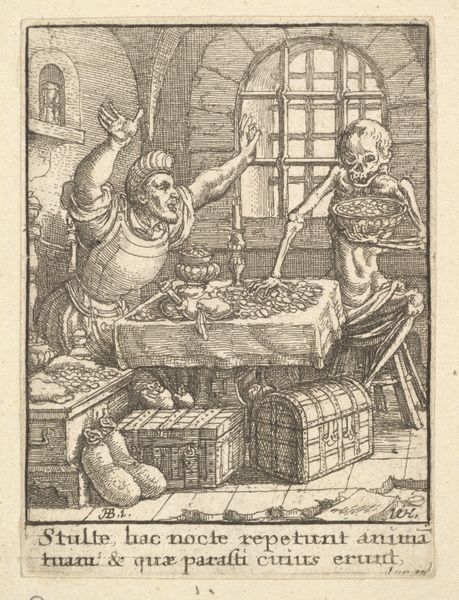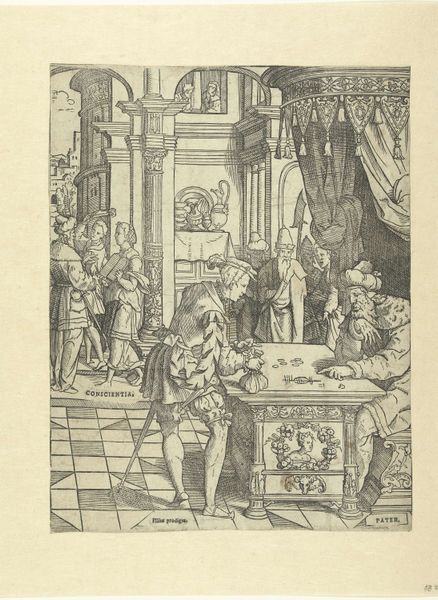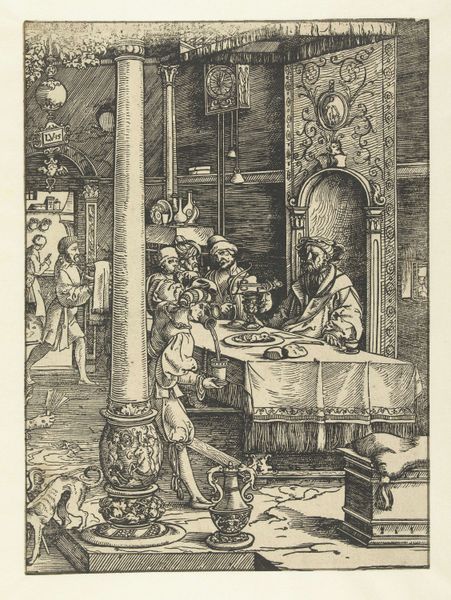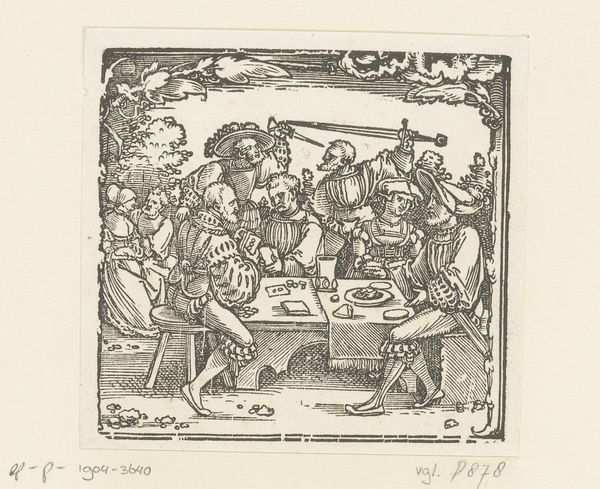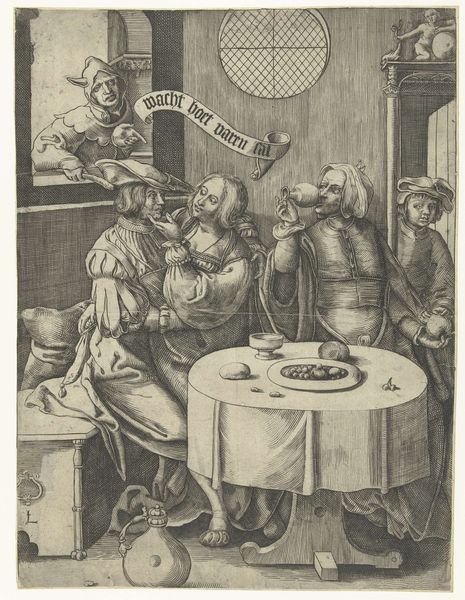
print, engraving
#
portrait
#
narrative-art
#
dutch-golden-age
# print
#
figuration
#
genre-painting
#
history-painting
#
engraving
Dimensions: height 270 mm, width 236 mm
Copyright: Rijks Museum: Open Domain
Curator: Today, we’re examining Cornelis Anthonisz.’s "The Meal," an engraving dating back to 1541. It resides here in the Rijksmuseum, a fascinating slice of 16th-century life rendered in exquisite detail. Editor: My first thought? Claustrophobia meets compulsive ornamentation. There's so much packed into this one space. The texture! All those tassels and the strangely self-aware dogs... it feels like a stage set for a rather tense drama. Curator: I see what you mean about the ornamentation. Anthonisz. was a master engraver. But look at how he uses these details, all those precisely rendered textures, to depict a society obsessed with appearances, with social stratification so embedded even in how people dined. The inscription of names above each figures serves a specific purpose; it appears we are confronted with personified vices. Editor: Vices? That does adds a whole layer. You see those three figures seated, labeled "Carelessness," "Idleness," and "Comfort?" I find their detachment unsettling—as if they're floating through their gilded existence, completely oblivious to the mess unfolding around them, all this tension of domestic labor around their privileged meal. And yet, they are defined by these roles: so idleness becomes them. Curator: Exactly. Think of the wider cultural context of the time. These aren't merely individual flaws but a critique of a society growing increasingly indulgent. Anthonisz., through this engraving, tapped into anxieties about moral decay, mirroring concerns echoed in contemporary literature and religious discourse. Editor: So it's social commentary disguised as domestic tableau. The very busyness of the scene feels intentional—a sort of moral overload. This tension between detail and critique is what gives it resonance, wouldn’t you say? The symbolism embedded in the common day. Curator: Precisely, Cornelis tapped into deeper collective anxiety and criticism against a slowly transforming societal background. The piece challenges us to reflect on how our own societies reflect on care, labor, and societal structures. Editor: So while my initial reaction was a bit... theatrical, looking closer, it becomes clear: it's theater with a very sharp point. A point still relevant today, which I find strangely hopeful.
Comments
No comments
Be the first to comment and join the conversation on the ultimate creative platform.
